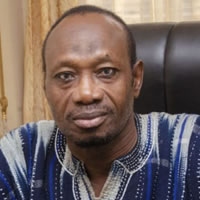Introduction
People with disabilities in Ghana are often regarded as unproductive and incapable of contributing in a positive way to society and rather, are seen as constituting an economic burden on the family and the society at large, which leaves them in a vicious cycle of poverty. In Ghana, there are well strong disability movements actively working to improve the living conditions for people living with disabilities. Disabled persons are often poorly represented in civil society and Ghana is no exception. A number of national policies and strategies have been targeting and including the needs of Persons with Disabilities (PWDs), either individually in the different sectors or as crosscutting issues in national programs. PWDs in Ghana are subject to various forms of exclusion, discrimination, and stigmatization. A combination of culture and political economy has ensured that PWDs must contend with barriers that are not faced by the general public. This chapter analyses disability in the district by type of locality, disability type and sex and by activity status.
Population with Disability
Table 6.1 shows the population by disability type and sex. One per cent of the population in the Bia West District have disabilities of different forms. Among the disable population in the district, 36.1 per cent has sight disability; 26.8 per cent has physical disability, 25.4 per cent has speech disability while 20.0 per cent have hearing impairment. There are slight disparities between males and females with disability. Table 6.1 also indicates that, males report higher disabilities more than females. Disability in urban localities is 1.2 per cent, which is higher than that of rural localities (0.9%). Sight disability is predominant among females in urban than those in rural localities.
Type of Disability
Figure 6.1 shows the pictorial distribution of population by disability type and sex. A proportion (36.1%) of the population has disability with sight, followed by those with physical disability (26.8%), speech (25.4%), and hearing (20.0%). Persons with more than one form of disability constitute 11.8 per cent.
Distribution by type of locality
As shown in table 6.1, disability by type of locality speech disability among males in rural areas is greater than their counterparts in urban localities. A high proportion of males (23.6%) in urban localities are with physical disability than their female counterparts (20.8%). This may be as a result of lack of access to quality health care, living conditions and other strenuous activities in the rural areas.
Disability and Activity Status
Table 6.2 shows that of persons with disability in the district, 61.6 percent are employed, 1.4 percent unemployed and 37.0 percent are economically not active. For all the disability types reported in the table, those unemployed constitute less than 10.0 percent. Table 6.2 further illustrate that there is varying differences in the data relating to males and females. For the male population disabled, 64.4 percent are employed, 0.6 percent unemployed and 35.0 percent economically not active. Of the various categories of disability, sight, hearing, speech and other forms of disability not elsewhere classified has more than fifty percent of their population employed, while physical, intellect and emotional has more than fifty percent of their population in the economically not active group. For the female population disabled, 58.2 percent are employed, 2.4 unemployed and 39.5 percent economically not active.
Disability and Education
Table 6.3 presents data on population 3 years and older by sex, disability type and level of education in the district. Of the population disabled, 39.1 percent have never been to school. Those in pre-primary constitute only 6.5 percent with 45.7 percent in basic school. From the table people with disability who have attended secondary or higher levels of education constitute 8.7 percent. For the male and female distribution, more females (47.6%) have never attended school compared to their male counterpart where only 32.0 percent have never attended school. On the other hand, there are more males (48.3%) in basic school compared to females (42.7%) who have basic education.
Date Created : 11/19/2017 2:24:21 AM




